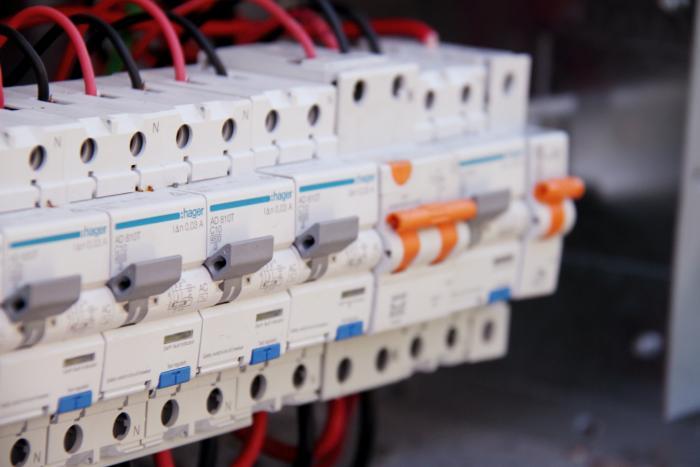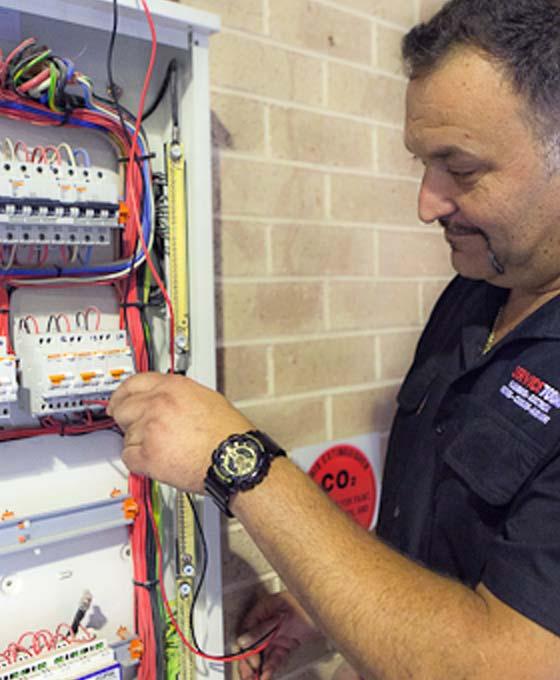
Safety Switches
We’re so familiar using electrical appliances in our homes, day in and day out that we hardly ever stop to think for a moment that they could harm us. Accidents do occur but it is more important to remember that defective appliances or faulty wiring can cause severe disasters, which can lead to electrical fires, damage to property, injury or even death.
In the event of an electric shock, electricity flows through a person’s body to the earth. If exposed, it can pass through a person’s heart, interfering with the natural electric impulses that keep it beating, causing the heart to stop functioning. To avoid these kinds of accidents from occurring, you need to install safety switches so that you can keep yourself and your family safe and protected at all times.
Safety Switches
To get protection against probable electric accidents, safety switches are your best insurance. They break off extra current and are made to instantly switch off the power when hazardous levels of electricity leak out of faulty switches, appliances or wiring to the earth. It takes only 10 to 50 milliseconds for a safety switch to function- fast enough to save your life and aid in shielding expensive fires or damage to your property.
Installing Safety Switches

Safety Switches installation
As per Australian law since 1992, all homes must have safety switches installed on all the power circuits. Considering the protection they give, installing safety switches is simple and economical.
If you’re building a new home or refurbishing your existing home, you should install proper safety switches on both the lighting and power circuits no later than 3 months after transferring the property. If you’re selling your property then you also need to ascertain if safety switches are installed or not, and declare it on the standard sales contract.
If you’re renting a home in Australia that falls under a residential tenancy agreement, since March 2006 the owner of the place is responsible for providing safety switch installation if they aren’t present already. This must be done no more than six months after the agreement. If you’re renting an older home then you will have to install them at your own cost.
If you're renting out your property as a domestic residence, the same rule applies.
“You have the legal responsibility to get a licensed, local electrician to install safety switches; if you refrain from doing it, you could be liable for fines amounting up to $1000”.
Safety Switches Vs Fuses & Circuit Breakers
- Never confuse fuses and circuit breakers with safety switches.
- Circuit breakers or fuses are there in every home and they’re designed to cut the power off when the electrical wiring in a property has way too much current passing through it, which could probably heat the wires of electrical appliances’ and cause a fire. Safety switches are intended to shield the wiring and appliances in your property and not people.
- Although fuses, circuit breakers and safety switches will all stop too much flow of current; only safety switches will do it to a greater scale, shielding you against electric shocks and serious injuries including death.
- Safety switches are an added form of safeguard that can be used alongside fuses and circuit breakers, but they aren’t a substitute.
Types of Safety Switches
There are 3 kinds of safety switches, which are explained underneath:
1. Portable units
These safety switches are perfect for use with portable power tools and extension cords.
2. PowerPoint units
These safety switches are integrated into a single power point, rendering single circuit protection.
3. Switchboard of meter box units
They’re installed on the main switchboard, they can give either full protection or selected circuit protection.
Routine check-ups
What’s the point of having safety switches if they don’t work as intended? If they don’t work properly then they can’t protect you. So it's a good practice to test your safety switches on a regular basis, preferably every three months.
Testing a safety switch is easy and you can do it yourself. Just press the ‘TEST’ button – if it is working properly, doing this should automatically trip the switch to the “OFF” position. You can then reset it by pushing the switch back to “ON”. If it doesn’t work properly, you can right away get in touch with a qualified, emergency electrician and get it repaired as soon as possible.